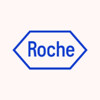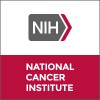
A Phase I Pharmacokinetic Study in HIV-Positive Subjects of Oral Ganciclovir and Concomitant Antiretroviral...
Cytomegalovirus InfectionsHIV InfectionsTo determine whether there is a pharmacokinetic drug interaction between oral ganciclovir and oral zidovudine (AZT) and between oral ganciclovir and oral didanosine (ddI). To determine whether concurrent administration of probenecid affects the pharmacokinetics of oral ganciclovir. To obtain data on the short-term safety of oral ganciclovir administered concurrently with AZT, ddI, or probenecid in HIV-positive patients.

A Phase I/II Clinical Study of Nystatin I.V. (Intravenous) in Patients With HIV Infection.
HIV InfectionsTo evaluate the clinical toxicity, safety, and maximum tolerated dose (MTD) of intravenous nystatin in patients with HIV infection. To evaluate the potential anti-HIV activity and clinical pharmacology of intravenous nystatin.

Phase I Protocol for the Evaluation of the Safety and Immunogenicity of Vaccination With Synthetic...
Acquired Immunodeficiency SyndromeHIV InfectionSynthetic HIV Peptide Vaccines (Treatment Protocol) We are conducting a study to evaluate the safety of two peptide vaccines (given alone or in combination) in patients with early HIV infection. Patients entered onto the study must have >500 CD4 cells/mm(3) and have preserved cardiac, hepatic, renal, and bone marrow function. Patients must be off all anti-retroviral therapy for at least 6 months and may not have received any experimental HIV vaccines. The vaccines being testing in this trial are comprised of short peptide segments of the HIV envelope, including the V3 loop. In animal studies, the peptides were able to induce neutralizing antibodies as well as cytotoxic T responses to HIV. This will be the first trial in which they are given to humans. The study will last for approximately one year, during which time the volunteers will receive 6 peptide vaccines under the skin. For more information, please call Tino Merced-Galindez, R.N. at (301) 496-8959 or Dr. Richard Little at (800) 772-5464.

The Safety and Effectiveness of Clarithromycin and Rifabutin Used Alone or in Combination to Prevent...
Mycobacterium Avium-intracellulare InfectionHIV InfectionsTo compare the efficacy and safety of clarithromycin alone versus rifabutin alone versus the two drugs in combination for the prevention or delay of Mycobacterium avium Complex (MAC) bacteremia or disseminated MAC disease. To compare other parameters such as survival, toxicity, and quality of life among the three treatment arms. To obtain information on the incidence and clinical grade of targeted gynecologic conditions. Persons with advanced stages of HIV are considered to be at particular risk for developing disseminated MAC disease. The development of an effective regimen for the prevention of disseminated MAC disease may be of substantial benefit in altering the morbidity and possibly the mortality associated with this disease and its treatment.

The Safety and Effectiveness of a Two-Drug Combination in the Treatment of Patients With Hepatitis...
HIV InfectionsHepatitis CTo investigate the toxicity of interferon alfa-2b ( IFN alfa-2b ) in combination with nucleoside analog therapy in HIV-positive patients with chronic hepatitis C. To determine the efficacy of treatment with IFN alfa-2b for chronic hepatitis C in patients with advanced HIV infections treated with nucleoside analog therapy. IFN alfa-2b has HIV inhibitory properties and has also been approved for treatment of chronic hepatitis C. Studies have shown that IFN alfa-2b is effective in asymptomatic HIV-positive patients with chronic hepatitis C, but the drug's benefit against hepatitis C in patients with advanced HIV infection has not been determined.

A Study on the Rate of Opportunistic (AIDS-Related) Infections Among HIV-Positive Children Who Have...
HIV InfectionsThe purpose of this study is to find out if it is safe for HIV-positive children who are responding well to their anti-HIV treatment to stop taking medications that prevent AIDS-related infections (opportunistic infections) such as pneumonia and other bacterial infections. This is an observational study, meaning children will only be monitored to see if they develop any infections. Children have been receiving medications to prevent complications of HIV infection, such as Pneumocystis carinii pneumonia (PCP), Mycobacterium avium complex (MAC) disease, or other bacterial infections. It is common for HIV-positive patients with low CD4 counts to receive these preventive medications. However, these drugs can have serious side effects, they are expensive, and it is possible for bacteria resistant to the drugs to grow. For these reasons, it may be beneficial to the child to stop taking these preventive medications if he/she has been on anti-HIV (antiretroviral) therapy and has improved CD4 counts. This study will look at how many children who stop taking their medications develop opportunistic infections.

The Effect of Acyclovir Treatment of the Herpes Simplex Virus (HSV) Infection on HIV Levels in the...
Herpes SimplexHIV InfectionsPart A: To evaluate the impact of HSV suppression with acyclovir ( ACV ) on HIV burden in patients with asymptomatic HSV infection and at high risk for HSV reactivation. Part B: To characterize the change in plasma HIV RNA levels and other measures of HIV burden during and after a 10 day course of ACV treatment for acute HSV infection. Approximately 70% of patients infected with HIV are concurrently infected with HSV. There is new evidence to suggest that HSV may act as a co-factor in HIV disease progression. This study will attempt to determine if the upregulation of HIV RNA that occurs during symptomatic HSV reactivation also occurs during asymptomatic HSV reactivation and if suppression of HSV will result in decreased levels of HIV RNA. There is a need to determine the patterns of association between HSV and HIV.

A Phase III Study to Evaluate the Safety, Tolerance, and Efficacy of Early Treatment With Zidovudine...
HIV InfectionsPrimary: To determine the efficacy of early treatment with zidovudine (AZT) in HIV-infected asymptomatic infants. To determine the safety and tolerance of AZT in this patient population. Secondary: To compare the virologic and immunologic parameters between the treatment groups. To determine the efficacy of AZT as an early treatment to prevent development of CD4+ cell depletion in HIV-infected asymptomatic infants. AZT is currently indicated for primary treatment in children with HIV-associated signs and symptoms and for those with significant immunodeficiency. This study will attempt to determine whether early treatment with AZT prevents the development of symptoms in HIV-infected infants who are asymptomatic.

A Randomized Phase II Study of Two Doses of Interferon Alfa-2a (IFN Alfa-2a) in Combination With...
HIV InfectionsTo determine the safety and efficacy of two doses of interferon alfa-2a ( IFN alfa-2a ) in combination with zidovudine ( AZT )/zalcitabine ( ddC ) versus AZT/ddC only in patients with HIV infection and CD4 count < 400 cells/mm3. AZT and ddC inhibit HIV by acting as reverse transcriptase chain terminators, while IFN alfa-2a inhibits translation of viral proteins. Combining agents that act at different sites of viral replication may improve HIV inhibition and produce more effective and sustained anti-HIV effects.

A Randomized Study of Activity, Safety, and Tolerance of Oral Ro 24-7429 (Tat Antagonist) in Patients...
HIV InfectionsTo study the anti-HIV activity of the various doses of Ro 24-7429 monotherapy based on virologic and immunologic endpoints. To study the safety and tolerance of Ro 24-7429. To explore relationships between exposure to Ro 24-7429 and its metabolites and antiviral activity and drug toxicity. To determine a safe, tolerable, and active dose regimen of Ro 24-7429, and to make preliminary observations of Ro 24-7429 in combination with another antiretroviral nucleoside. The HIV genome contains a number of genes that regulate viral replication. Control of the activity of these genes and their encoded proteins represents a potential target for development of new antiretroviral drugs. The tat (transactivator of transcription of HIV) antagonist Ro 24-7429 is the first compound for clinical testing that utilizes this approach for therapy of HIV infection.
